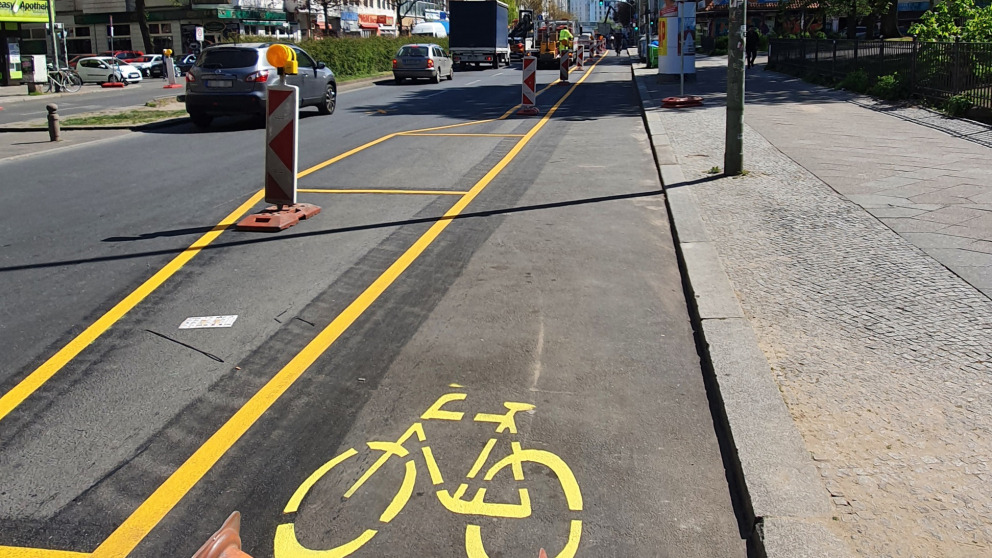Creation of Cycle Lane on Kottbusser Damm Leads to 22% Reduction in Air Pollution
13.04.2021
Berlin's Mobility Act aims to strengthen eco-mobility by improving conditions in the city for cyclists, pedestrian traffic, and public transport. How do changes in mobility infrastructure affect air quality? Researchers from the IASS have evaluated the impacts of two trials: a bicycle lane and a community street space. Their measurements show that air pollution decreased significantly during these traffic trials.

A pop-up bicycle lane was created on Kottbusser Damm in April 2020 and is to remain in place. The elimination of a single car lane on this busy thoroughfare resulted in a 22% reduction in the amount of air pollution cyclists were exposed to. Vehicles were banned from using Böckhstrasse – the location of the community street space – every Wednesday from 2pm to 6pm, from April through to September 2020; air pollution fell by 16 percent during this time.
"These figures are based on mobile measurements taken before and after the implementation of the bike lane on Kottbusser Damm. These measurements are important to assess the threat to human health posed by air pollution," explains IASS project leader Erika von Schneidemesser. Monitoring stations located at a distance to the roadside measure the so-called "urban background". There, the researchers were unable to detect any significant change in air pollution during the trials.
"On busy roads like Kottbusser Damm the air quality is often substantially worse than the urban background level. The amount of air pollution cyclists were exposed to improved with the conversion of a car lane into a bicycle lane. But broader changes are needed to deliver better air quality over a wider area," says von Schneidemesser. The IASS team has submitted their research findings to the Senate Department for the Environment, Transport and Climate Protection.
Link:
Report: Mobility Policy and Air Quality
Contact

Dr. Erika von Schneidemesser
